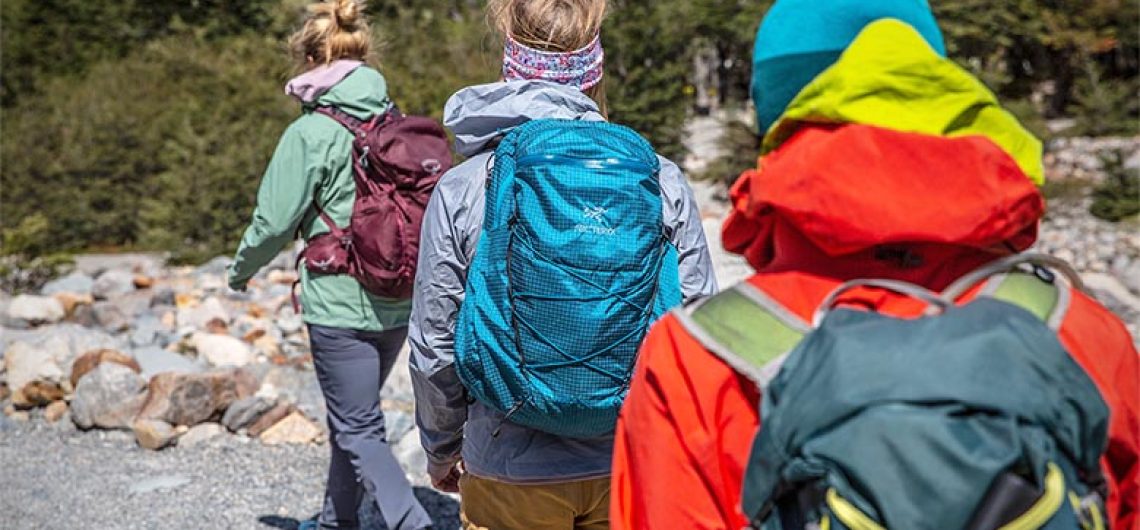We have a list of the items you should carry in your daypack as you climb Mount Kilimanjaro, Mount Kenya, Mount Meru, Ol Doinyo Lengai or even the Ruwenzori mountains. Inside your backpack, you should consider having the items that you will only need for the day, in your day-to-day trekking activities and they should include; Waterproof gear, a sun shelter, additional warm clothes, food, a packed lunch, gloves, sunglasses, sunscreen, insect repellent, and a camera which will fit perfectly in your daypack when climbing Mount Kilimanjaro. The majority of your other gear and equipment will be in your huge duffel bag, which our porters will carry from one campsite to the next when you are on the mountain.
From the moment you enter the Kilimanjaro park gate to begin your hikes, you will pass through five distinct temperature zones on your ascent, from the warm, humid forest to the ice and snow of the glacier-covered summit. As a result, you will need a range of equipment to prepare for the various Kilimanjaro weather conditions.
After breakfast, our porters will remove your 15-kg (maximum) duffel bag, and you won’t see it again until you arrive at camp in the late morning.
What is the recommended capacity and weight of a Kilimanjaro daypack?
Your daypack should be light and durable as you’ll be carrying a daypack with everything you’ll need for the day’s hike (25-35 liters is recommended).
The guides will inform you of any special gear you’ll need to keep you safe and comfortable on the route during the daily briefing on Kilimanjaro. They will also inform you of the weather conditions to expect.
To prevent your items from becoming wet in case of heavy rain, it’s a good idea to line the interior of your daypack with a waterproof stuff sack or something similar.
Make sure your daypack has a built-in rain cover at all times. If so, get one on your own and have it nearby at all times in case of unexpected rain.
Get your complete Kilimanjaro packing list, which will walk you through the items you’ll need to take with you when you climb the mountain.
Do you know how to pack your backpack and duffel bag? Find out here.
What to include in your daypack for Kilimanjaro’s basic necessities
1. Clothes
The hiking conditions might drastically alter during the day, from scorching sunshine to a chilling breeze. When you layer your clothing, you have the freedom to add and remove layers as the day wears on, helping you to keep warm and comfortable without perspiring. When you stop moving, sweat may turn bone-chillingly cold.
- a raincoat (fully waterproof with hood)
- Rain gear (full-length side zippers work well to take on and off quickly)
insulating layer of fleece - breathable softshell windbreaker
- If you want to be warm while you stop for lunch, bring a down jacket.
- a sun hat
- a warm cap that protects your ears, like a beanie
- Gloves
- sunglasses (essential, as the sun’s rays, are harsher in the lower atmosphere)
- Knee supports are optional.
It’s best to have a few additional layers because the weather may change fast on a mountain and fatigue helps you feel the cold more keenly.
2. Snacks, drinks, and food
You will often be able to replenish your water bottles and hydration bladders when we stop for lunch, but occasionally this won’t be available. You must be able to transport three to four liters of water. Hydration bladders are useful since they encourage you to drink regularly rather than frequently stopping to refill a bottle.
- hydration bladders and/or water bottles
- energy bites (candy, trail mix, energy bars)
- a lunchbox (provided by our chef)
If we aren’t stopping for a hot lunch along the route, you’ll also need to bring a packed lunch along with any home-brought goodies like energy bars, sweets, or your own trail mix.
3. Miscellaneous Items
To treat blisters, small cuts, and scrapes, you’ll need a basic first aid pack. You’ll also need sunscreen and any personal medications you’re taking. Always have sunscreen on hand, and reapply it frequently. Remember to take care of your lips; the hot sun and dry air can lead to chapping and pain. Apply chapstick frequently.
- We won’t be washing our hands on the trail as water becomes more scarce the higher you go, so hand sanitizer is crucial!
- You might want some insect spray the first day or so, but as we walk higher, this won’t be essential.
- paper towel (take the cardboard center out for easier packing)
- Handkerchief or tissues
- soap and water
- standard first aid kit (blister plasters, ibuprofen, personal medications)
- Sunscreen
- Sun-protective lip balms, such as chapstick
- insect repellant
- other electrical devices, a camera, and extra batteries
- Extra boot laces are essential!
Best Practices for Packing a Daypack
Your guides will give you packing suggestions according on the altitude and weather each day before you go.
Click here to see the recommended gear list for climbing Mount Kilimanjaro
- Don’t overpack; simply bring what you’ll need for the day.
- Your water will be the heaviest item, so drink it frequently to reduce your burden.
- Put sunscreen and lip balm in your daypack’s hip belt for quick access.
- Since batteries don’t function well in the cold, always keep more on hand.
- Gloves can shield your hands from the cold and the light.
- If your daypack doesn’t already come with one, don’t forget to bring one.
- To keep your equipment dry, use a waterproof stuff sack as a liner.
- Get your printable checklist and learn more about what to carry for Kilimanjaro.
You can read more about daypacks for Kilimanjaro treks here.
![]()


Comments